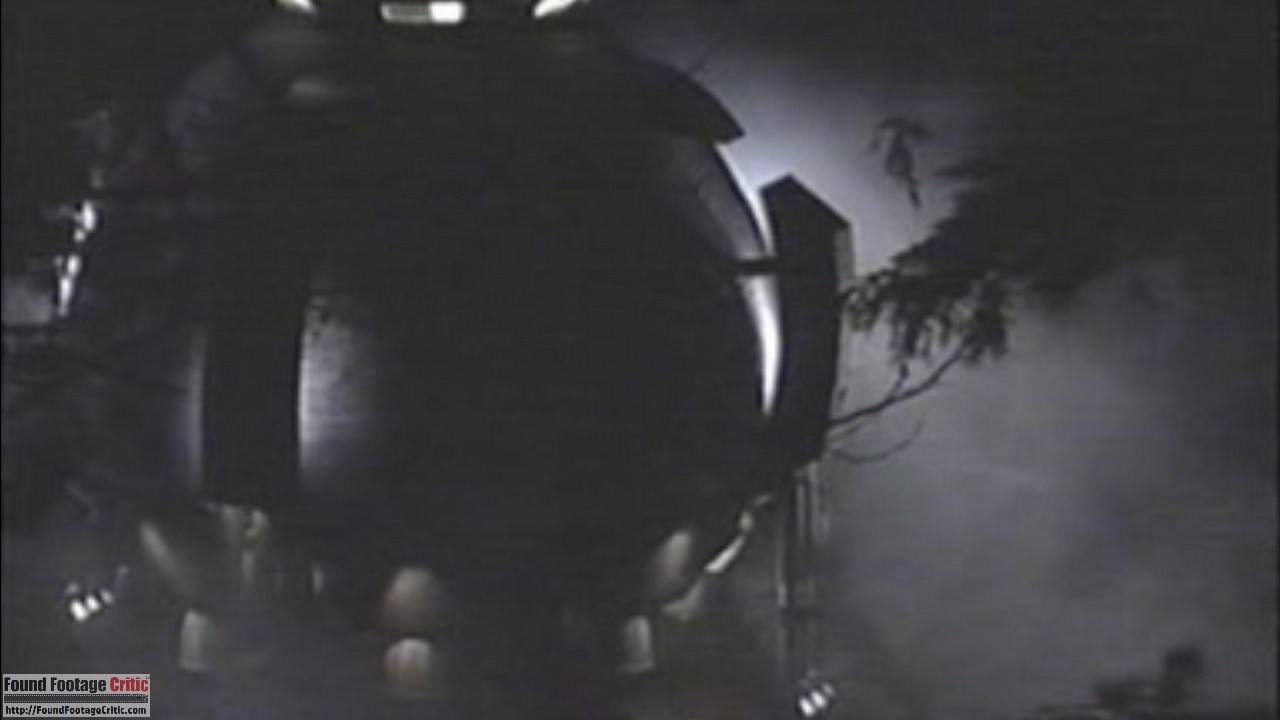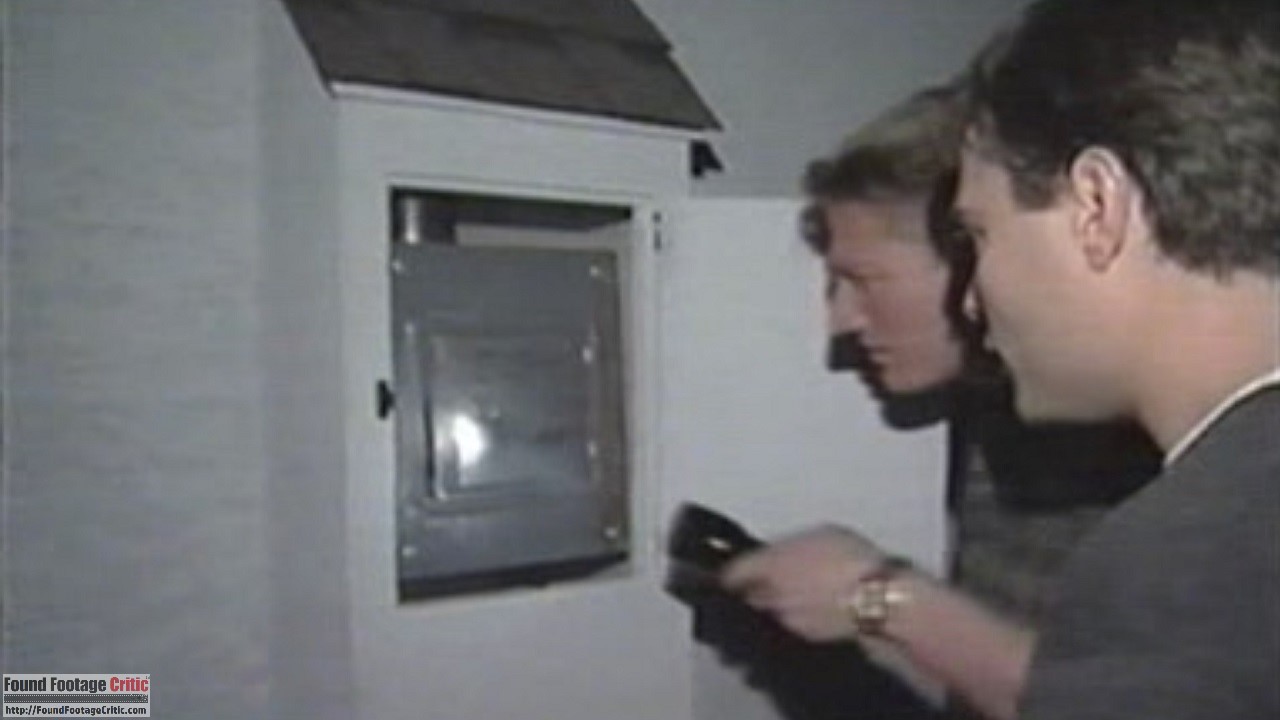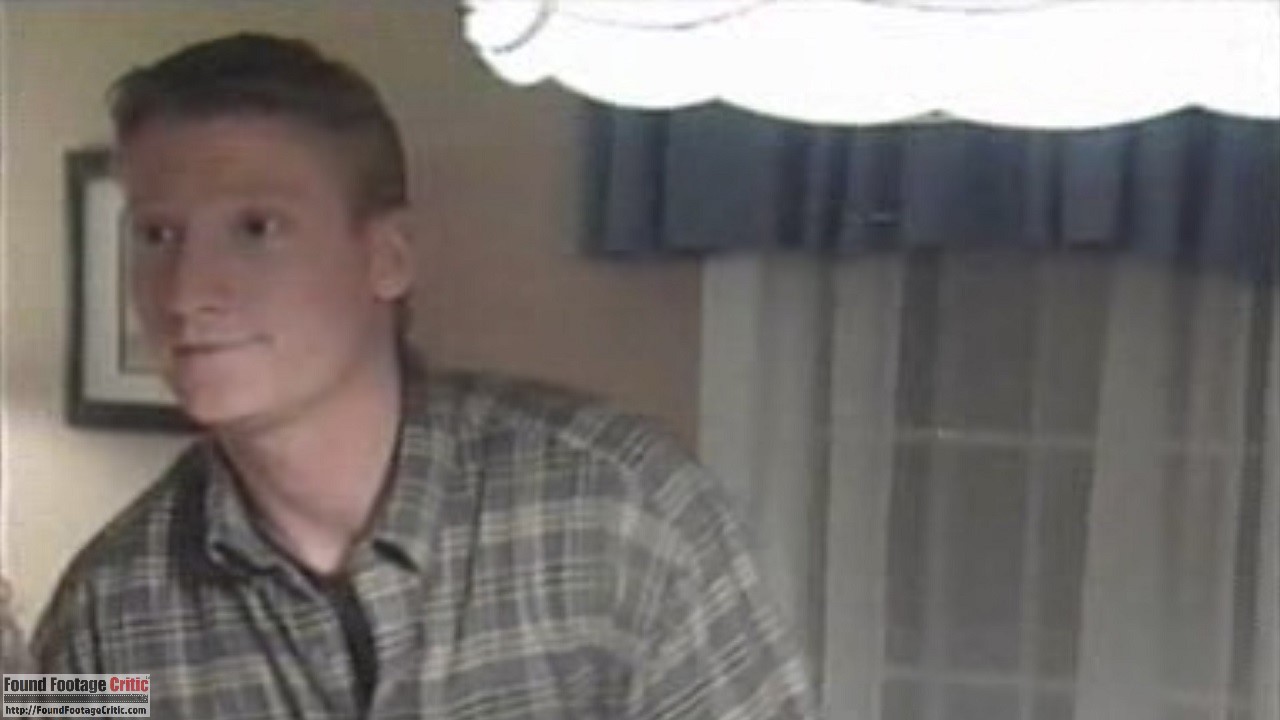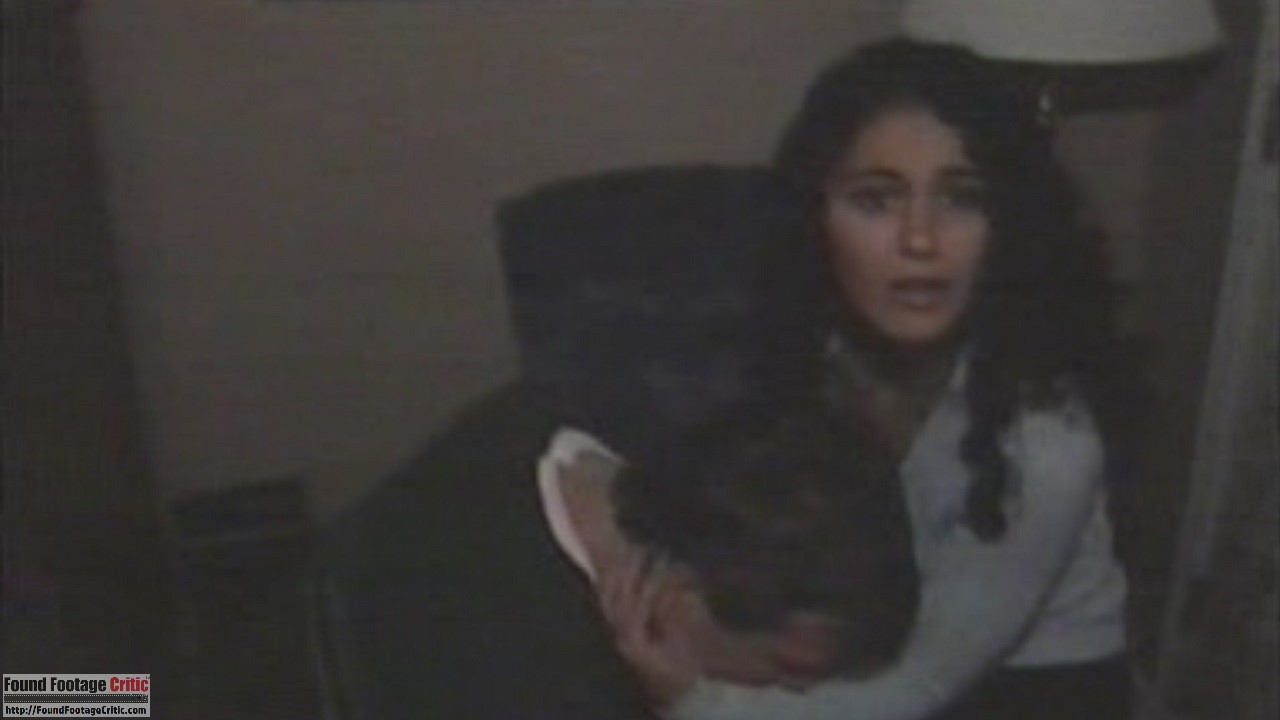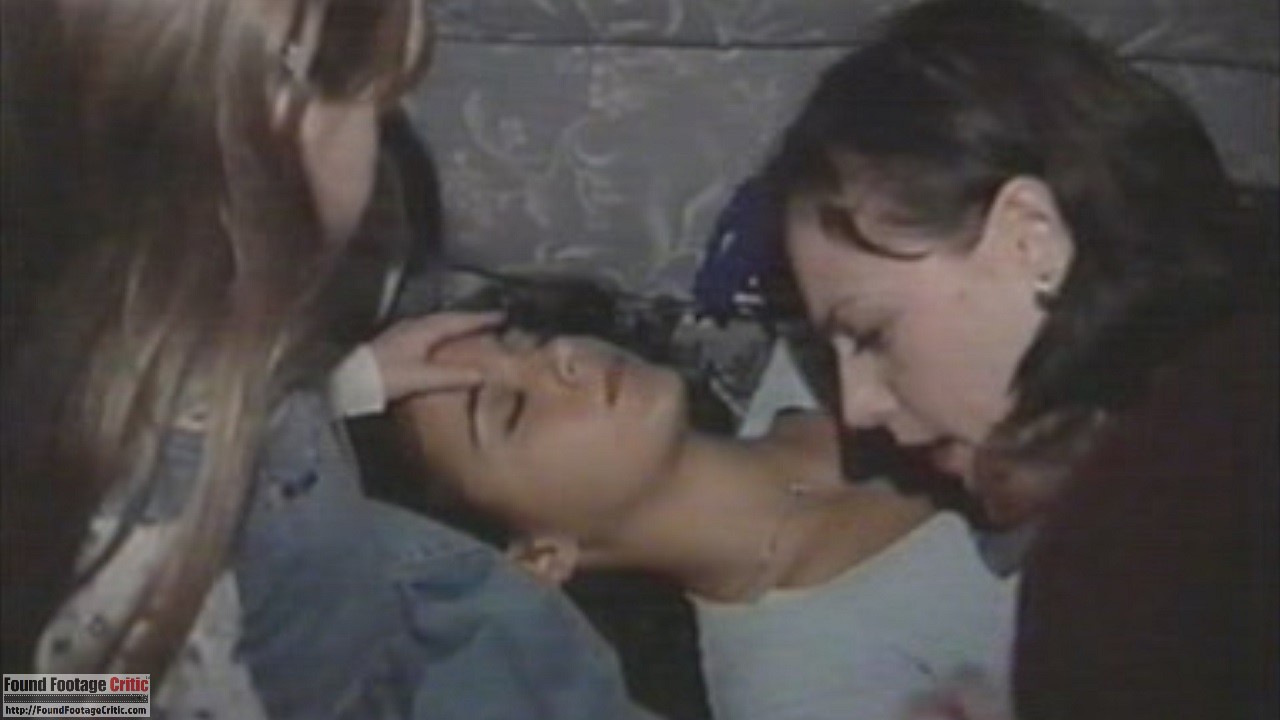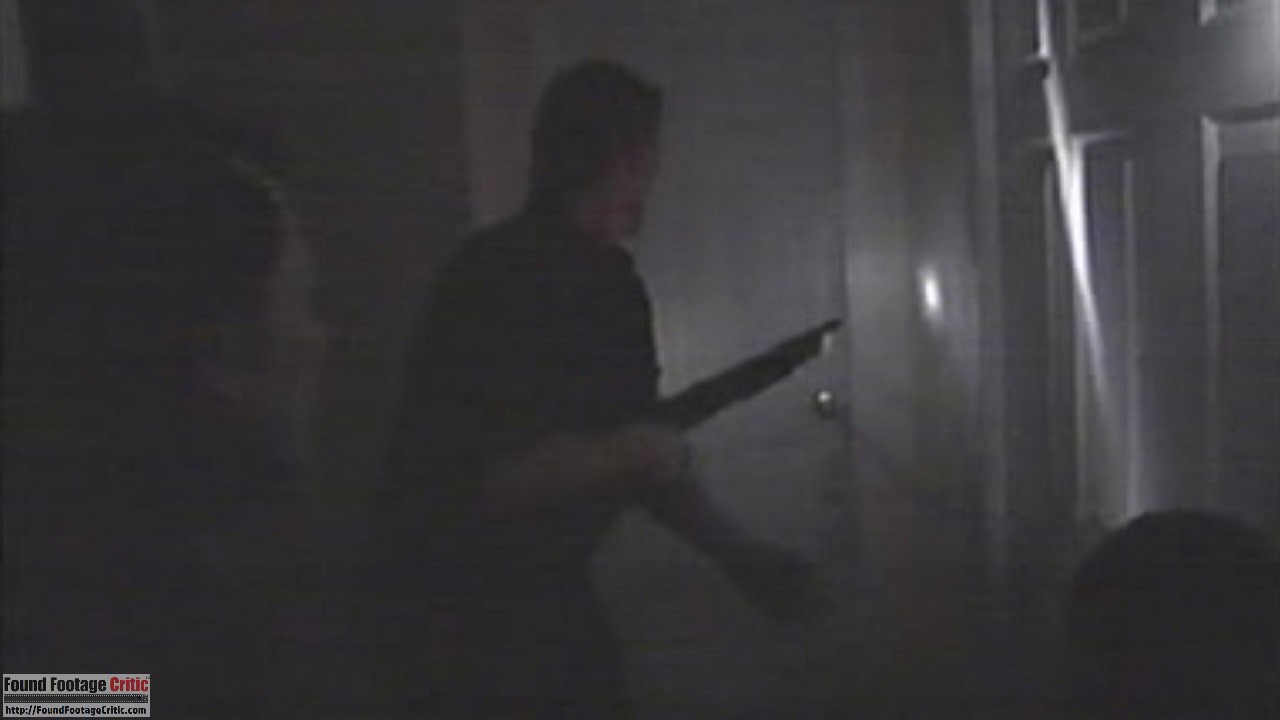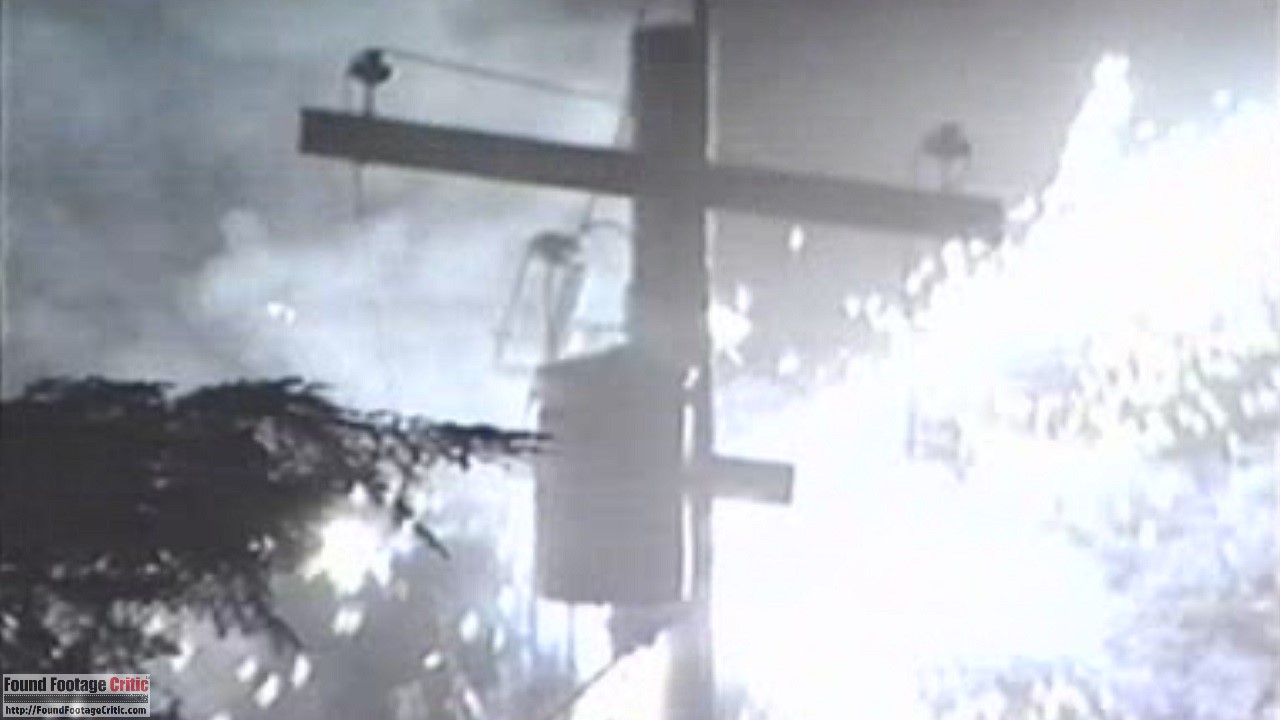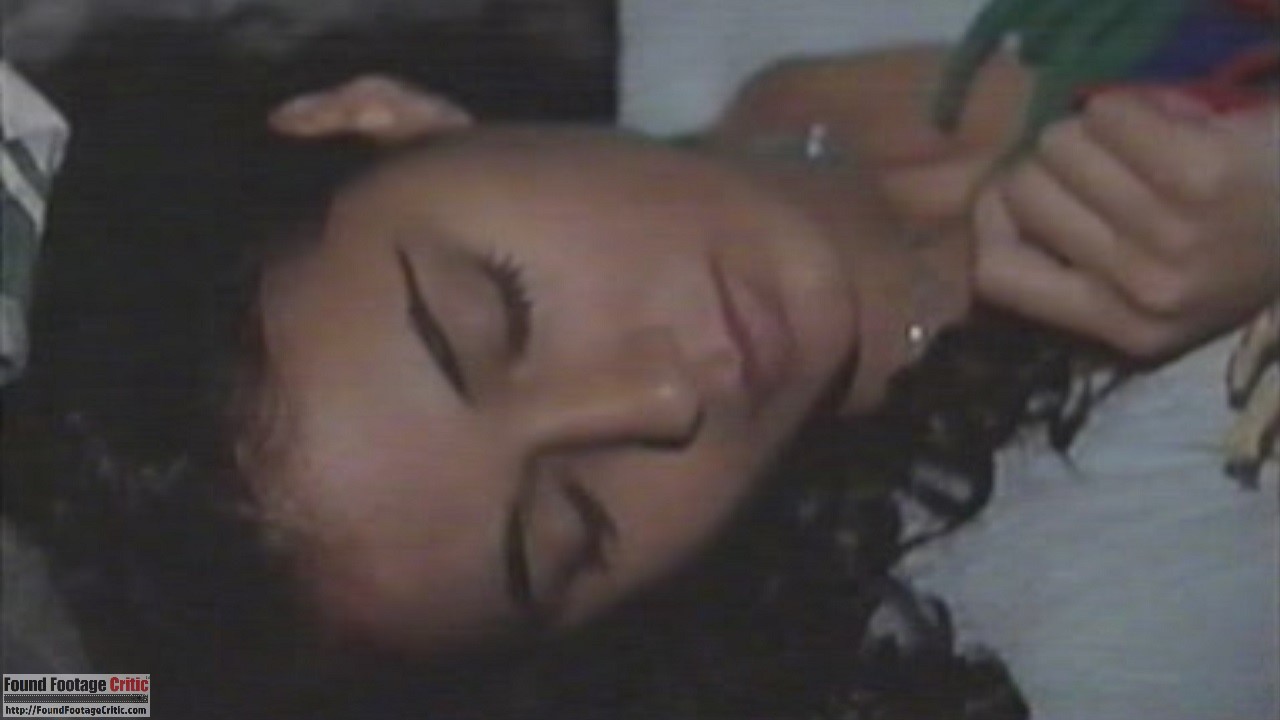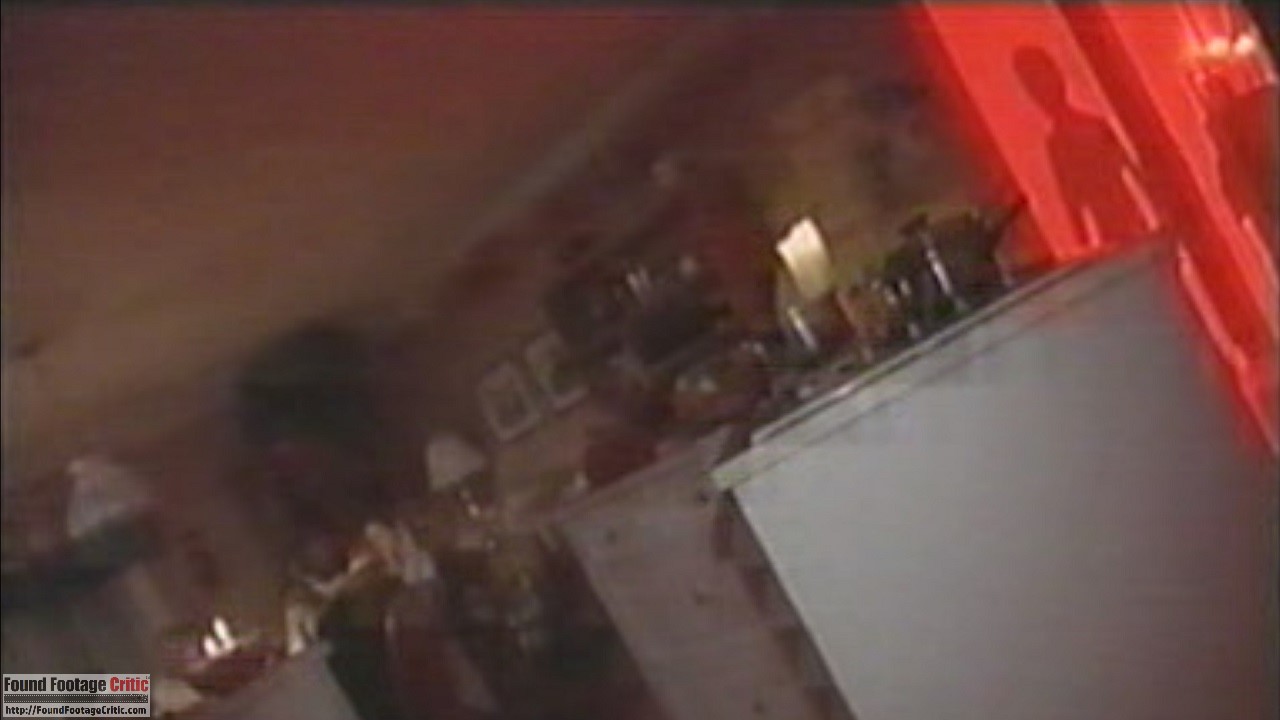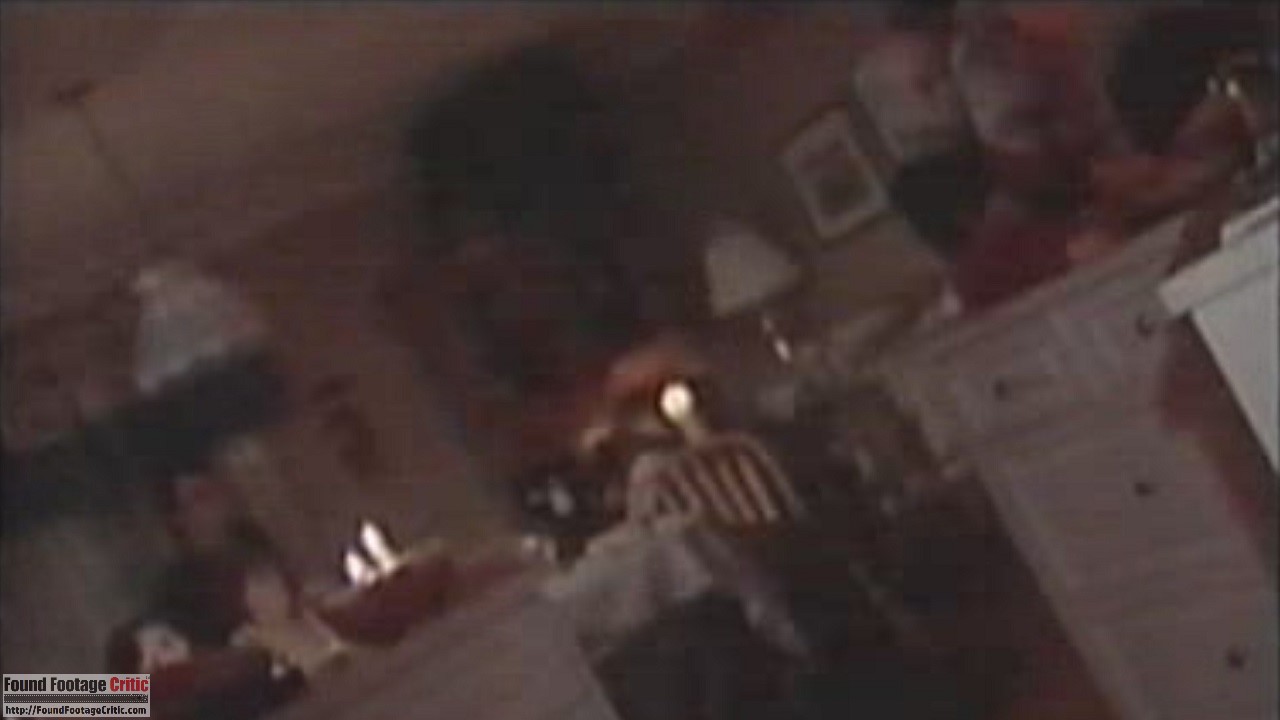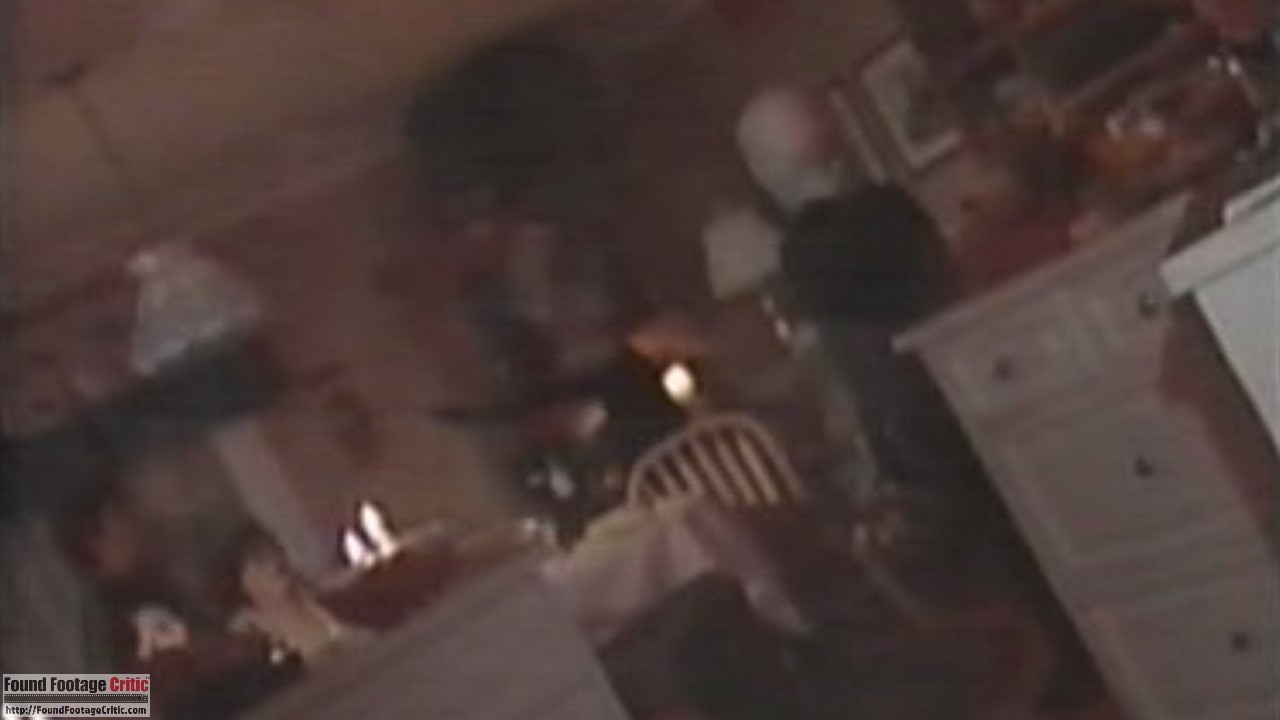 “Alien Abduction: Incident in Lake County” is a found footage horror/sci-fi made for TV film written and directed by Dean Alioto. The film follows a family whose Thanksgiving is disrupted by aliens that lay siege on their rural home in Lake County, Montana.
“Alien Abduction: Incident in Lake County” is a found footage horror/sci-fi made for TV film written and directed by Dean Alioto. The film follows a family whose Thanksgiving is disrupted by aliens that lay siege on their rural home in Lake County, Montana.
Alien Abduction: Incident in Lake County (a.k.a. The McPherson Tape) is a remake of the classic 1989 film UFO Abduction. The backstory behind these two films is almost as intriguing as the films themselves. The sordid story includes a warehouse fire, deceit on a global scale, and the UFO community believing that UFO Abduction (1989) was actual proof of alien visitation.
Alien Abduction: Incident in Lake County opens with an on-screen message describing the genesis of the found footage about to be presented. “In the fall of 1997, a sixteen-year-old boy set out to document his family’s Thanksgiving dinner. What he purportedly captured on his video camera was more than just a family get together.”
The backstory behind these two films is almost as intriguing as the films themselves
Next, the film transitions to the home of “Mom” (Gillian Barber) in Lake County, Montana. Shooting the found footage is Mom’s youngest son Tommy (Kristian Ayre), who is still enjoying the novelty of his new VHS video camera. Also present is eldest son Kurt (Aaron Pearl), his wife Linda (Ingrid Kavelaars), and their daughter Rosie (Katlyn Ducharme). As the film progresses, additional family members and friends are introduced, including middle brother Brian (Michael Buie) and his girlfriend Renee (Emmanuelle Chiriqui), and finally sister Melanie (Marya Delver) and her boyfriend Matthew (Benz Antoine).
The conversation amongst the extended family covers much of what one would expect to see and hear during a holiday gathering. Topics range from disapproving of the boyfriend; Mom’s drinking problem; and the omnipresent “what are you going to do with your life” conversation. We also learn that Mom’s drinking problem stems from the recent passing of her husband. These plot elements effectively play into the perceived realism of the film.
Shortly after everyone arrives, a flashing red light is observed through the windows and the house loses electricity. Brothers Tommy, Kurt, and Brian go outside to check the fuse box, only to find the box smoking and partially melted. Off in the distance, the group see more flashing lights and hear a loud popping. Believing there’s a blown transformer on the neighbor’s property, the three brothers set out to investigate.
The group walks some distance to the neighboring property line. Sure enough, a transformer is damaged, shooting off sparks and popping. What the brothers did not expect to find is both horrific and shocking—they come across what they believe to be an alien spacecraft and signs of alien life. Having been spotted by the alien visitors, the three brothers run back to the house, barricading themselves in. Matters go from bad to worse as the alien invaders lay siege on the small house. Backed into a corner, the family bands together and does everything in their power to thwart the alien invaders.
Aliens, Conspiracy, and Deceit, Oh My!
We interviewed Dean Alioto and have the full story that the public has never seen, including the making of UFO Abduction (1989) and Alien Abduction: Incident in Lake County (1999); behind the scene photographs, the never published trailer for UFO Abduction; and a video clip of the 1994 Fox network TV show Encounters segment covering UFO Abduction.
Read our detailed story behind the making of UFO Abduction (1989) and Alien Abduction: Incident in Lake County (1999)—including the infamous warehouse fire and alleged government cover-up!
- Dean Alioto: The McPherson Tape, UFO Abduction, and Alien Abduction [Part 1]
- Dean Alioto: The McPherson Tape, UFO Abduction, and Alien Abduction [Part 2]
Found Footage Filming Reason
The filming reason examines the justification for the characters filming a feature length’s worth of footage. Alien Abduction: Incident in Lake County advances a surprisingly strong filming reason given the infancy of the found footage genre in 1998.
The primary filming reason is to capture the Thanksgiving holiday. Overlaid with this filming reason is Tommy’s fascination with his new video camera. These two filming reasons provide ample justification as to why Tommy films much of what happens during opening scenes of the film.
As the group realizes what they’ve discovered, the actual existence of alien life, the filming reason takes a decidedly different turn. Tommy now films to everything to capture evidence of the alien invaders.
Further, once the house loses power, Tommy’s camera is the only available light source, expanding the need to keep the camera on.
While the filming reason is very good, it is not perfect. Alien Abduction: Incident in Lake County contains a number of high-stress moments when filming does not come across as natural. For example, when one of the characters has a seizure, Tommy stands over her filming but doesn’t put the camera down to help. Moments like these hurt the found footage conceit of the film. In contrast, the original version of the film, UFO Abduction (1989), presents far stronger filming reasons.
Found Footage Cinematography
The cinematography in Alien Abduction: Incident in Lake County is exceptional. Character Tommy wields the video camera like someone untrained in cinematography—his filming is appropriately shaky at times and out of focus.
In one particular scene, a frightened Tommy runs back to his house while filming. This scene is extraordinarily well done. While Tommy runs, the video camera points towards the ground and swings haphazardly—this type of cinematography is to be expected when someone is running with a camera at their side.
Also of note are two particular scenes where Tommy puts the camera down to do something and the camera continues to record, unmanned. In the first scene, Tommy places the camera on the floor so he can free his hands to barricade the front door. In the second scene (during the climactic ending), Tommy places the video camera on a tabletop, capturing what takes place during the final moments of the film. These two scenes provide an organic means of enabling Tommy to have some screen in front of the camera.
A particularly good technique employed in this film is the use of video artifacts and pixelation resulting from alien activity. UFO Abduction (1989) incorporates interference in the form of static, while Alien Abduction: Incident in Lake County, employs a more sophisticated form of pixelated interference. These two films are among the first (if not the first) to employ video artifacts in found footage. Since the interference occurs only when the aliens are nearby, the video artifacts serve a secondary goal of masking the practical effects.
Many of the techniques used in Alien Abduction: Incident in Lake County are now commonplace in the modern found footage genre. This film and its predecessor, UFO Abduction (1989), were groundbreaking in their realistic approaches to filmmaking.
While the cinematography of Alien Abduction: Incident in Lake County is exceptional, the camerawork comes across as more authentic in UFO Abduction (1989). The film’s predecessor feels more gritty and realistic, while the cinematography in Alien Abduction: Incident in Lake County, comes across as slightly polished and staged in comparison.
In one point during the film, the camera battery runs low as is indicated by the low battery icon. The low battery warning displays on the camera viewfinder but does not record to video. The main character, Tommy, uses this warning as a cue to switch to a spare battery. By contrast, in UFO Abduction (1989), the cinematographer makes an effort to conserve the remaining battery life through shutting the camera light.
Also of note is the addition of explicit swearing and nudity, both of which were bleeped or blurred for TV. In an interview with Director Dean Alioto, he indicated that these elements were included to lend more authenticity to the film.
Found Footage Purity
The found footage purity of Alien Abduction: Incident in Lake County is very strong. All of the footage presented is captured by characters within the universe of the film. The footage is presumed to have been recovered and subsequently edited by a third party, justifying the opening on-screen text message; missing person message at the end of the film; interlaced interviews; and censored explicit language and nudity.
Acting
The acting throughout Alien Abduction: Incident in Lake County is, for the most part, believable. The dynamics between the family members comes across as authentic, particularly the ongoing issues they engage in, including Mom’s drinking problem and Tommy’s career indecision. These are the types of issues one would expect to arise during a family gathering.
In one particularly well-acted scene, the three brothers return to the house and tell everyone that they encountered aliens. The family is incredulous, dismissing their story as a joke or misunderstanding. One of the characters prompts Tommy to play back the footage for everyone in the house. When filming resumes, everyone in the house displays a melancholic expression. The contrast in the casts’ demeanor before and after they see the footage is brilliantly choreographed and acted.
Another realistic element in the film is Tommy wetting his pants after witnessing everything that had just happened. Small nuances like this one elevate the film, adding to the found footage authenticity of the final product.
In a breaking the fourth wall moment, one of the expert interview scenes in the film is played by Alien Abduction: Incident in Lake County director Dean Alioto. He plays Damin Hawkins, a filmmaker and special effects expert who evaluated the footage for authenticity. Dean Alioto cleverly says that the footage does not contain actors, and has no script or plot (other than the group trying to get out of the house). He caps off the interview with the line “It’s unnerving because if it’s a hoax, I should have been the one that directed it.”
while the acting in Alien Abduction: Incident in Lake County is very good, the film’s predecessor, UFO Abduction (1989), employs a far more realistic portrayal of the characters. The original film used improv actors and did not have a full shooting script. Conversely, Alien Abduction: Incident in Lake County is fully scripted, according to director Dean Alioto. The use of a script removes much of the spontaneous dialog and actions amongst the cast that sold the first film.
Plot
Alien Abduction: Incident in Lake County is a remake of the film UFO Abduction (1989). Plot-wise, the two films are nearly identical. The real difference between the two films is their execution.
Of the two films, UFO Abduction comes across as far more realistic, which is due in large part to the use of improv actors, improv dialog, and lack of a line-by-line script. In contrast, Alien Abduction: Incident in Lake County uses traditionally trained actors, a full script, and includes more conventional cinematography and choreography, resulting in an end-product that lacks the convincingly real look achieved by the first film.
To its credit, Alien Abduction: Incident in Lake County includes additional plot elements and techniques the first film lacks. Some noteworthy scenes include a video confessional (perhaps the first in a found footage film); having the characters review footage during the film. Further, the main plot draws from the plethora of alien visitation and abduction stories from the 1960s and onward, coupled with prevalent films of the era such as Close Encounters of the Third Kind (1977).
Additional Resources
- UFO Abduction (1989) Movie Review
- UFO Abduction (1989) Movie Trailer [EXCLUSIVE]
- Fox Network Encounters Segment on UFO Abduction (1989) [EXCLUSIVE]
- Dean Alioto: The McPherson Tape, UFO Abduction, and Alien Abduction [Part 1] [INTERVIEW]
- Dean Alioto: The McPherson Tape, UFO Abduction, and Alien Abduction [Part 2] [INTERVIEW]
- Audio Interview of Director Dean Alioto (Episode #80, Found Footage Files Podcast)

